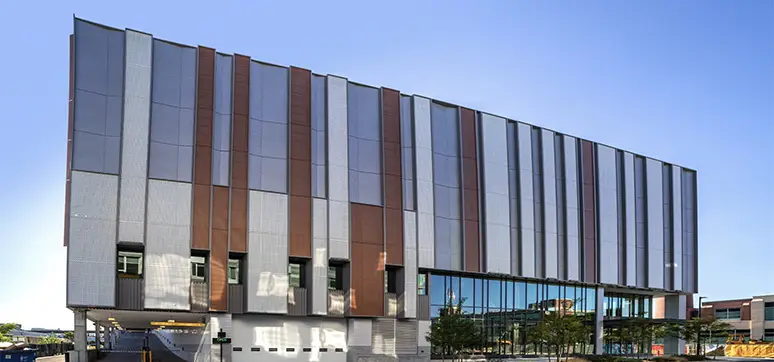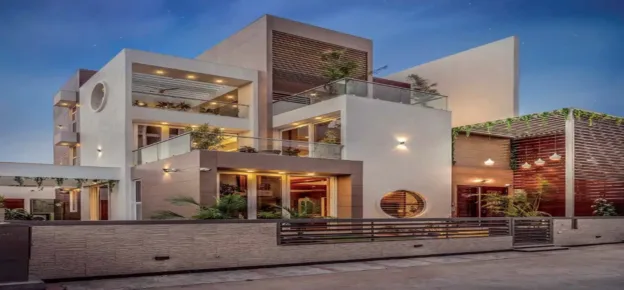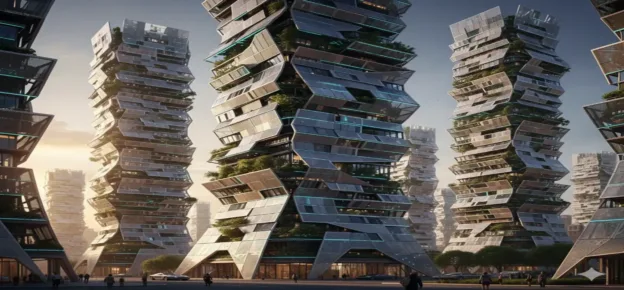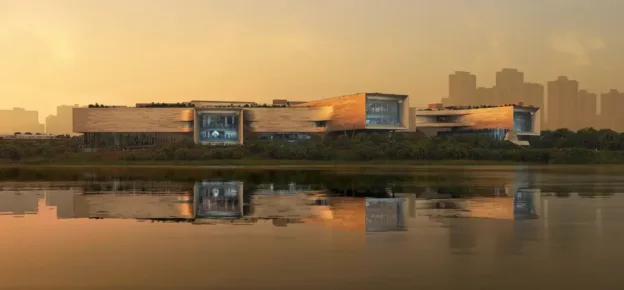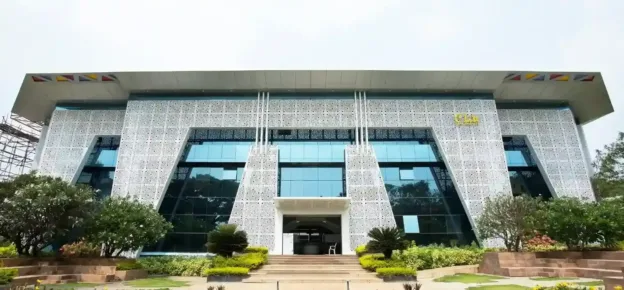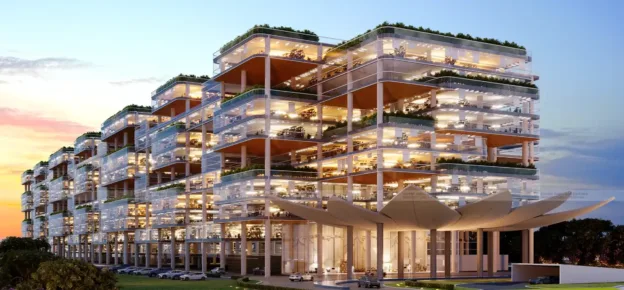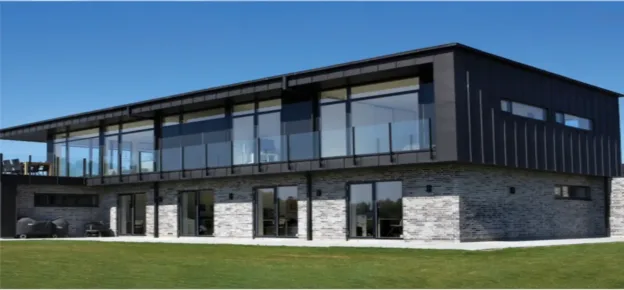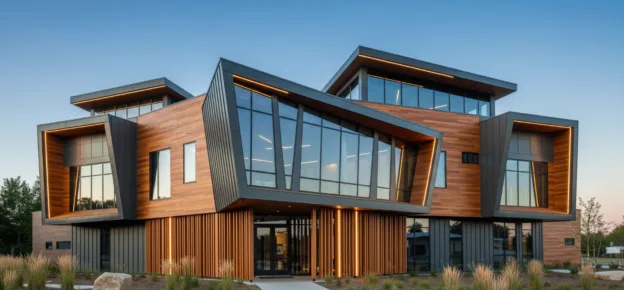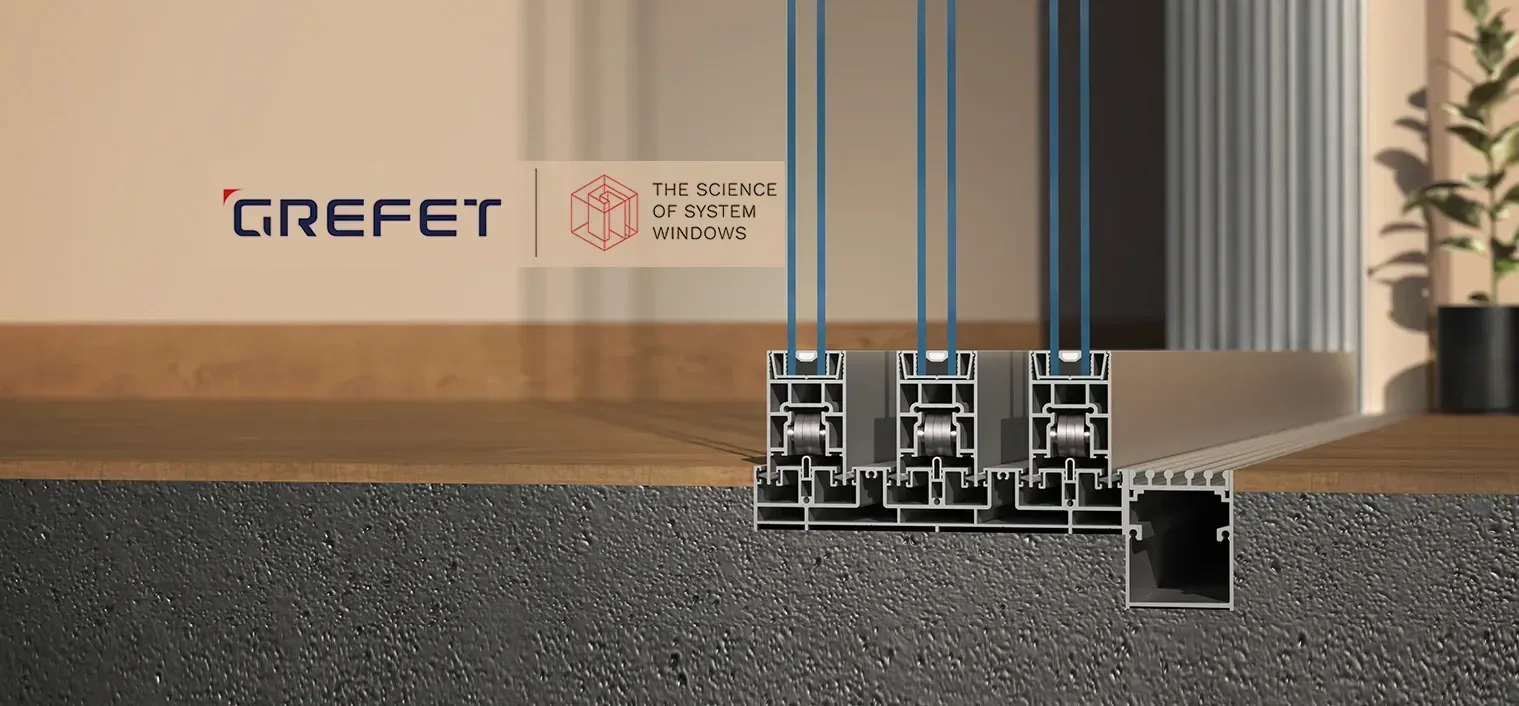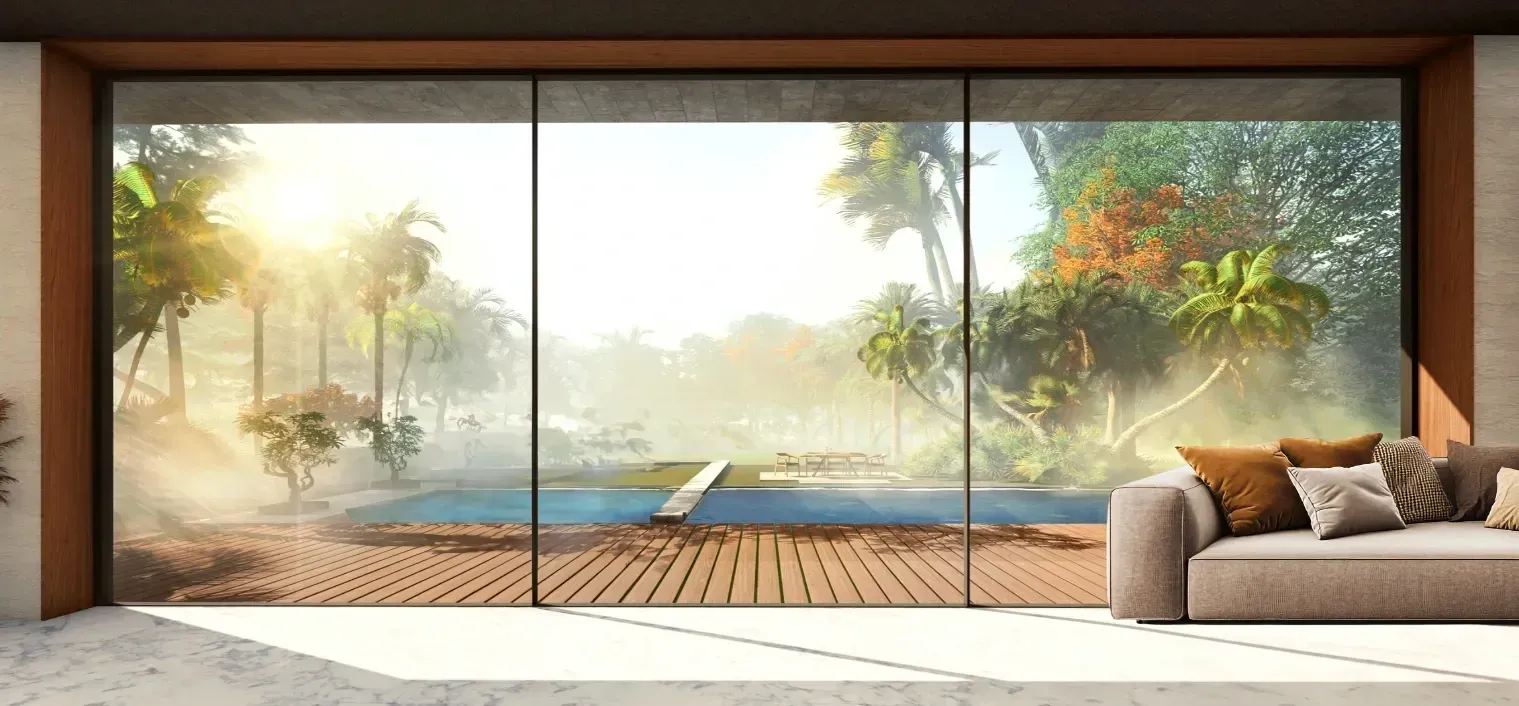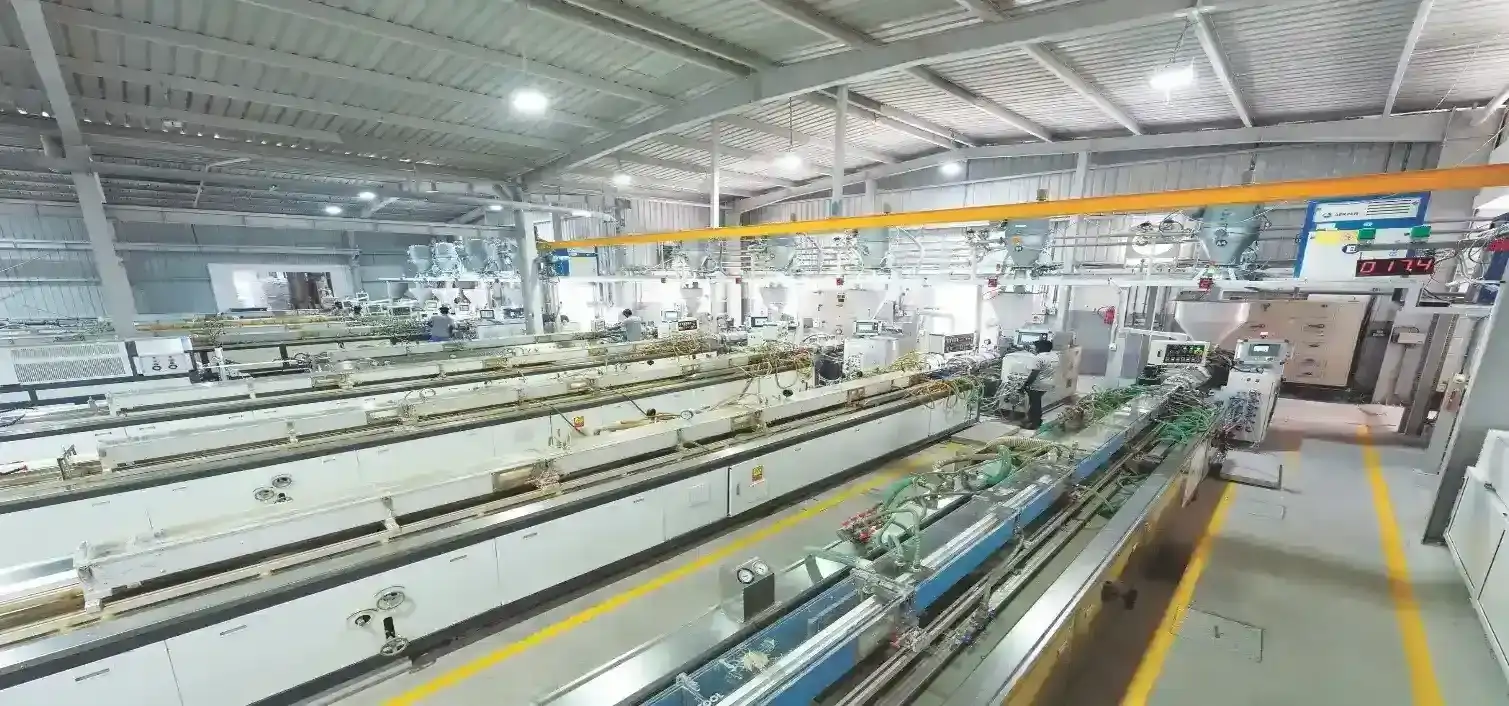Building envelope means the protection layer around the building, which provides support to aesthetics, energy efficiency, and comfort to the people. Cladding is an important constituent of the building envelope, and in past years, it has undergone enormous changes. Cladding certainly is a future booster for performance, giving sustainability an edge more than required, bringing exciting new building technologies and materials to the fore. This paper tends to discuss some of the future trends and innovations that can shape the cladding industry.
SUSTAINABLE CLADDING SOLUTIONS
The very same construction industry also drives environmental consciousness; it includes the cladding materials. Traditional choices such as aluminium and concrete could have high embodied energy (the energy it takes to extract, process, and transport materials) and contribute to urban heat island effects. A 2021 RICS report approximates that nearly 40% of energy-related CO2 emissions need sustainable cladding solutions for the construction and building sector globally.
Here are some promising trends:
Recycled and bio-based materials:

Green concrete:
Precast concrete is one of the excellent building materials, no doubt, but its conventional production methods make it one of those contributions that assist in CO2 emissions. Formulations of green concrete with recycled materials or supplementary cementitious materials, such as fly ash, make the panels more sustainable.
Life cycle thinking:
A future Life Cycle Assessment may also involve thinking about the life cycle of a cladding system, including embodied energy, operational energy, and requirements for maintenance, and thinking about what may be done with the product at the end of its life.
SMART CLADDING SYSTEMS

Enhanced performance: It would include sensor-embedded cladding panels that can monitor the key performance metrics of the building, such as temperature, humidity, and air quality. It further adds that such data can be a key indicator toward the optimisation of building operations and guaranteeing occupant comfort, which can then lead to potential savings of between 10-30% of consumed energy.
Self-cleaning and self-healing materials: Self-cleaning cladding materials may feature in the cladding to bring down the maintenance cost or just to enhance the appearance of cladding in the long run. Other than the above, there are those materials that can have microcapsules of healing agents to repair small cracks or scratches and thus provide durability.
Kinetic cladding: Cladding systems that are responsive to weather conditions or optimise solar energy collection. For example, louvred kinetic façades respond to sunlight both to shade from it in summer and gain as much solar heat in winter.
PREFABRICATED CLADDING SYSTEMS
Some benefits offered by prefabrication to the cladding systems revolutionised by prefabrication are:
Faster construction: A faster construction time for the project and reduced on-site construction activity are easily obtained from off-site fabrication. This is, therefore, most befitting and a lot of help, more so to those urban setups or projects with a lot of pressure mounted on strict deadlines.
Improved quality control: Improved workmanship standards come with factory-controlled prefabrication conditions that guarantee quality results; these are repeatable and reduce risks of error from that experienced in on-site construction.
Reduced waste: Prefabrication leads to less material waste on-site, hence promoting reduced environmental degradation. The current global value of the prefabricated construction market is projected at 2.3 trillion dollars by 2025, increasing constantly.
FIRE SAFETY IN CLADDING
This has turned out very prime in the buildings, whereby the concern is that the cladding material should not be fire-resistive at all, to ensure safety for the occupants.
Here are some key trends in fire safety:

New and inventive cladding materials: As much as the shift in materials, so new cladding materials inch into offer probable fire protection. Foremost among those are fire- performance fibre cement boards and non-combustible metal composite panels having a fire-resistant core.
Building Information Modeling (BIM): BIM allows fire safety requirements to be coordinated at the design stage. Conversely, with the proper incorporation of fire safety design considerations in cladding and installation details of a digital model, it is easy to spot potential fire hazards.
PERSONALISATION AND AESTHETICS
The cladding has the most powerful impact on the architectural appearance of the building, while more self-expression and design solutions will be visible.
Biomimicry: Biomimicry finds in nature the inspiration for developing cladding materials with self-cleaning or self-healing qualities inspired by natural events.
3D Printing: The most recent 3D printing technology is bound to revolutionise cladding design. This develops geometrical forms to such an advanced level, and therefore, architects will have a much greater level of freedom in developing custom cladding panels.
Augmented Reality (AR) and Virtual Reality (VR): AR and VR technologies would be quite helpful for cladding design options in light of the building environment. This will enable the stakeholders to make properly informed decisions concerning aesthetics and functionality before actually taking up construction.
CHALLENGES AND OPPORTUNITIES
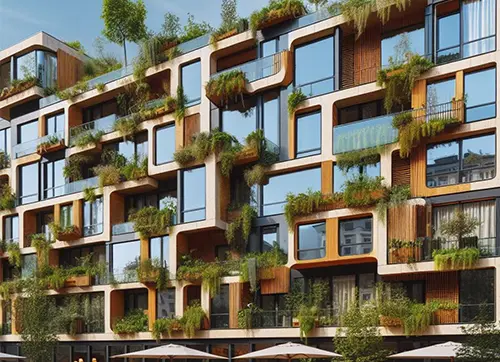
Finally, the key aspect will be training the workforce and upskilling it to be in a position to work with new materials and prefabrication technology. This is because the trend would actually be most needed in the actual collaboration between architects and engineers on one side and material scientists and construction professionals on the other side.
The future of cladding is driven by sustainability, performance, and innovation. Together with those will be the façade embodied with sensors, which would be smart technologies, and prefabrication methods with sustainable materials at the forefront of the future building envelopes. Adoption of these trends by the cladding industry shall make very good contributions to making high-performance, sustainable, and aesthetically liked buildings. This will help have a much friendlier environment and technologically sound future.
CONCLUSION
The future of cladding is bright, driven by a focus on sustainability, performance enhancement, and innovative design solutions. Sustainable materials, smart technologies like sensor-embedded panels, and prefabrication methods will shape the future of building envelopes. As the industry embraces constant innovation, we can expect even more exciting advancements in cladding that contribute to energy-efficient, safe, and visually stunning buildings.
References
- A 2021 report by RICS (https://www.rics.org/)
- A 2022 study by Grand View Research (https://www.grandviewresearch.com/)
- Department of Energy (https://www.energystar. gov/)
- Zion Market Research (https://www.zionmarketresearch.com/report/ prefabricated-housing-market)
